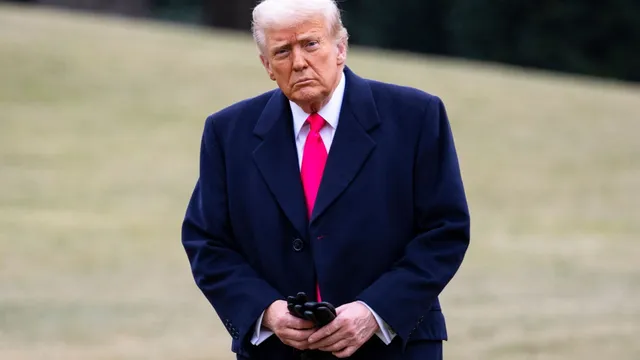
Trump's top officials signal openness to negotiate with China on trade
2025-05-09 21:03- Top U.S. officials held discussions with a Chinese delegation in Geneva regarding trade and economic tensions.
- There are growing signals from both nations indicating a willingness to negotiate and possibly resolve ongoing trade disputes.
- The outcome of these talks could significantly influence U.S.-China relations and global market dynamics.
Express your sentiment!
Insights
In early May 2025, high-level U.S. officials met with a Chinese delegation in Geneva, Switzerland, marking a significant moment in the ongoing trade war initiated by President Donald Trump's tariffs. This meeting involved U.S. Treasury Secretary Scott Bessent and U.S. Trade Representative Jamieson Greer, who aimed to address critical trade and economic issues. The discussions focused on the tariffs that Trump imposed, which have been highly controversial and have impacted the prices and supply of consumer goods in both nations. The talks came as both countries were signaling a possible thaw in relations after a period of heightened tensions, with China's Commerce Ministry confirming their willingness to engage in discussions. Officials from the Trump administration expressed optimism regarding potential trade negotiations, as Bessent anticipated that the U.S. would announce new trade deals with several significant trading partners soon. They asserted that negotiations were necessary to rebalance trade relationships and open markets, while acknowledging that tariffs could be unsustainable moving forward. Recent market responses also reflected investor hope for a resolution as stock futures rose on news of these negotiations, indicating that market confidence could hinge on the outcomes of these discussions. This meeting was to occur after months of stalled communication between the two countries due to the trade war, which has contributed to growing market worries in the U.S. over the economic implications of the tariffs. The talks signified a potential shift as both sides appeared willing to explore a mutual path forward, especially after indications from China that they were open to negotiations, acknowledging the concerns of U.S. businesses and consumers. This represents both a challenge and an opportunity for the Trump administration as they navigate public sentiments around tariffs and trade policies, with the U.S. dealing with a significant trade deficit. In conclusion, the meeting in Geneva emphasized the importance of high-level diplomacy in resolving trade disputes and showcased the delicate balance both nations are seeking to strike between protecting national interests and fostering cooperative trade relations. The outcome of these negotiations could have profound implications for the global economy and for the future of U.S.-China relations as they attempt to address longstanding issues of trade imbalance, tariff strategies, and economic cooperation.
Contexts
The current state of US-China trade relations in 2025 reflects a complex interplay of economic cooperation, competition, and geopolitical tensions. Amid the ongoing global challenges, both countries have found it essential to maintain robust trade channels, despite deep-seated issues related to tariffs, technology transfer, and market access. Recent negotiations have aimed at de-escalating trade tensions, with a focus on establishing more predictable and transparent trading practices. The Biden administration has shown a willingness to engage in dialogue, resulting in a series of trade agreements aimed at balancing the interests of American industries while addressing concerns around alleged unfair practices by China. Both nations have reaped the benefits of trade, but unresolved issues remain a significant hurdle. Chinese exports to the US have remained strong, bolstered by a recovery in demand post-COVID-19. Conversely, US exports to China have fluctuated due to varying tariffs imposed during the previous trade war and ongoing regulatory scrutiny. New tariffs are still in place on numerous goods, impacting various sectors, from agriculture to technology. In response to these conditions, US businesses continue to voice the need for a more level playing field, as they navigate challenges such as supply chain disruptions and increased competition from Chinese firms. Furthermore, the strategic rivalry has implications beyond trade, particularly in technology and intellectual property. The US has implemented measures to curb China's advancements in critical sectors such as AI, telecommunications, and semiconductors. Policymakers are promoting domestic production and seeking partnerships with allied nations to reduce reliance on Chinese technology. Despite these efforts, challenges remain, as the Chinese government supports its own technology firms, making it difficult for US companies to compete. As a result, the technology sector has become a flashpoint in US-China relations, overshadowing other areas of trade. In the coming period, stakeholders in both countries will need to navigate this intricate relationship carefully. The ongoing dialogues suggest a mutual recognition of the importance of cooperation in economic recovery. However, the underlying tensions related to trade practices, technology transfer, and national security concerns suggest that the road ahead will be fraught with challenges. As both nations adjust to this new landscape, the focus will likely remain on finding a balance between competition and cooperation, with an understanding that the stakes are high for both economies.